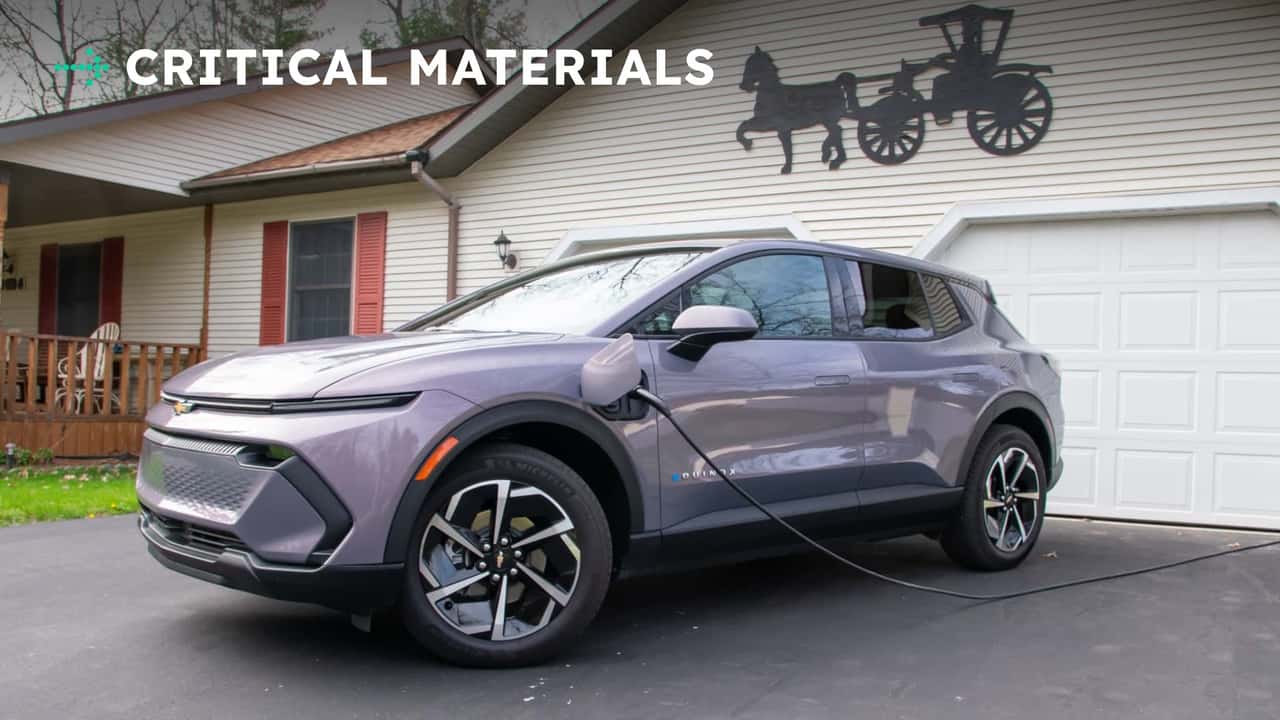The discourse around EV charging usually centers on public fast chargers and Level 2 plugs installed in private homes. But not everyone needs to fast charge at a Tesla Supercharger or Electrify America station every day, unless they’re road-tripping. And not everyone owns a home with a garage to install a Level 2 charger in the first place.
Renters make up a large share of American households, yet they often lack adequate charging options. That could soon change under a new proposal that, if successful, could unlock millions of potential EV buyers.
Welcome to **Critical Materials**, your daily round-up of news shaping the world of electric cars and technology. Plus, battery start-up QuantumScape has moved one step closer to the mass production of its proprietary solid-state cells. Let’s get rolling.
—
Still, there are ways to soften the blow with smarter policies and infrastructure. Automakers must build affordable, competitive EVs to start with. But buyers need more than just attractive models to make the switch.
Installing chargers at apartment complexes and rental properties could unlock a whole new pool of EV buyers, according to a new study.
Long-time Republican strategist Mike Murphy, who runs the EV Politics Project and the American EV Jobs Alliance, and was also a guest on the InsideEVs Plugged-In Podcast earlier this year, is reportedly lobbying California Governor Gavin Newsom to invest in home chargers at apartments and condos across the state.
If the experiment succeeds, it could serve as a blueprint for the rest of the country.
Murphy told Politico that multi-family home charging was lacking in California, where EV adoption is otherwise the highest in the country. California accounts for one-third of all EV sales in the U.S.
Renters, in particular, have little incentive to install chargers if they’re only living in an apartment temporarily. Landlords, meanwhile, may not fully understand the benefits of home charging or worry that the plugs could go unused if tenants drive gasoline cars.
—
Renters, who are far less likely to own EVs than homeowners, represent a potentially game-changing untapped market in a state where growth for battery-electric and plug-in hybrid cars has stalled in recent years.
Murphy’s plan would tap revenue from the state’s carbon-emissions trading program — a figure he said would be $100 million annually in an ideal world — to fund state-run installations and, in turn, let landlords charge a small monthly fee.
“It’s got to be landlord-friendly,” Murphy said. “We’re going to put it in for free, and you can charge a little money for it. It takes out all the headaches for the apartment building owner.”
This idea isn’t coming out of the blue. Politico cited a study which concluded that three out of four apartment renters in California were willing to pay up to $50 per month for a parking spot if it were equipped with a Level 2 charger.
It makes plenty of sense for the renter to use cheaper residential electricity to charge up their EVs, especially if their vehicle is lying idle for the vast majority of the time. If renters commute daily, they could wake up to a fully charged battery every morning, saving significantly on fuel costs, which are especially high in California.
Landlords, meanwhile, could earn a small monthly fee and make their properties more appealing by offering EV charging.
—
It’s a great idea on paper, but execution could be a different beast, especially when politics and governments are involved.
California has already backed out of Governor Newsom’s earlier proposal to replace the now-dead $7,500 federal tax credit with a state-funded alternative due to budget deficits. And getting lawmakers to agree on a friendly application framework to release the funds for the home chargers could be another big challenge.
Still, if the state can muster the political will to pull this off, it could be a game-changer for EV adoption locally and potentially even across the country.
—
In other news, CEO RJ Scaringe will temporarily take on a dual role as Chief Marketing Officer while the company searches for someone to take up the new position.
The company continues to face intense competition and has yet to produce an EV profitably, losing thousands of dollars on every R1S and R1T it sells.
The mid-size electric SUV, expected to start at around $45,000 when it debuts next year, aims to disrupt the market much like the Model Y did five years ago. But it will have to do so without the help of a $7,500 federal tax credit and succeed purely on merit.
It’s also arriving in an increasingly difficult economic and policy environment that keeps getting more uncertain due to tariffs and export controls from China.
—
Back to battery technology: B1 samples typically refer to prototype or validation cells that are essentially pre-production batteries made to test and refine the design before full-scale manufacturing begins.
The Volkswagen Group is QuantumScape’s largest shareholder and one of its primary customers. The company has poured north of $200 million into the battery start-up to develop solid-state battery cells.
—
**100%: Should Apartment Rentals Start Including Charging Stations?**
According to 2022 data, about 100 million Americans live in rented homes. That’s out of a total of about 130 million households, indicating a large pool of renters that could benefit from Level 2 home charging.
Do you think pro-EV states like California should do more to encourage landlords to install home chargers? If you rent, would access to a Level 2 plug be a deciding factor in choosing an apartment? And if you drive a gas car, would having a charger in your parking spot make you consider switching to an EV? Share your thoughts in the comments.
—
Have a tip? Contact the author at: [email protected].
https://insideevs.com/news/776889/level-2-ev-chargers-for-renters/


